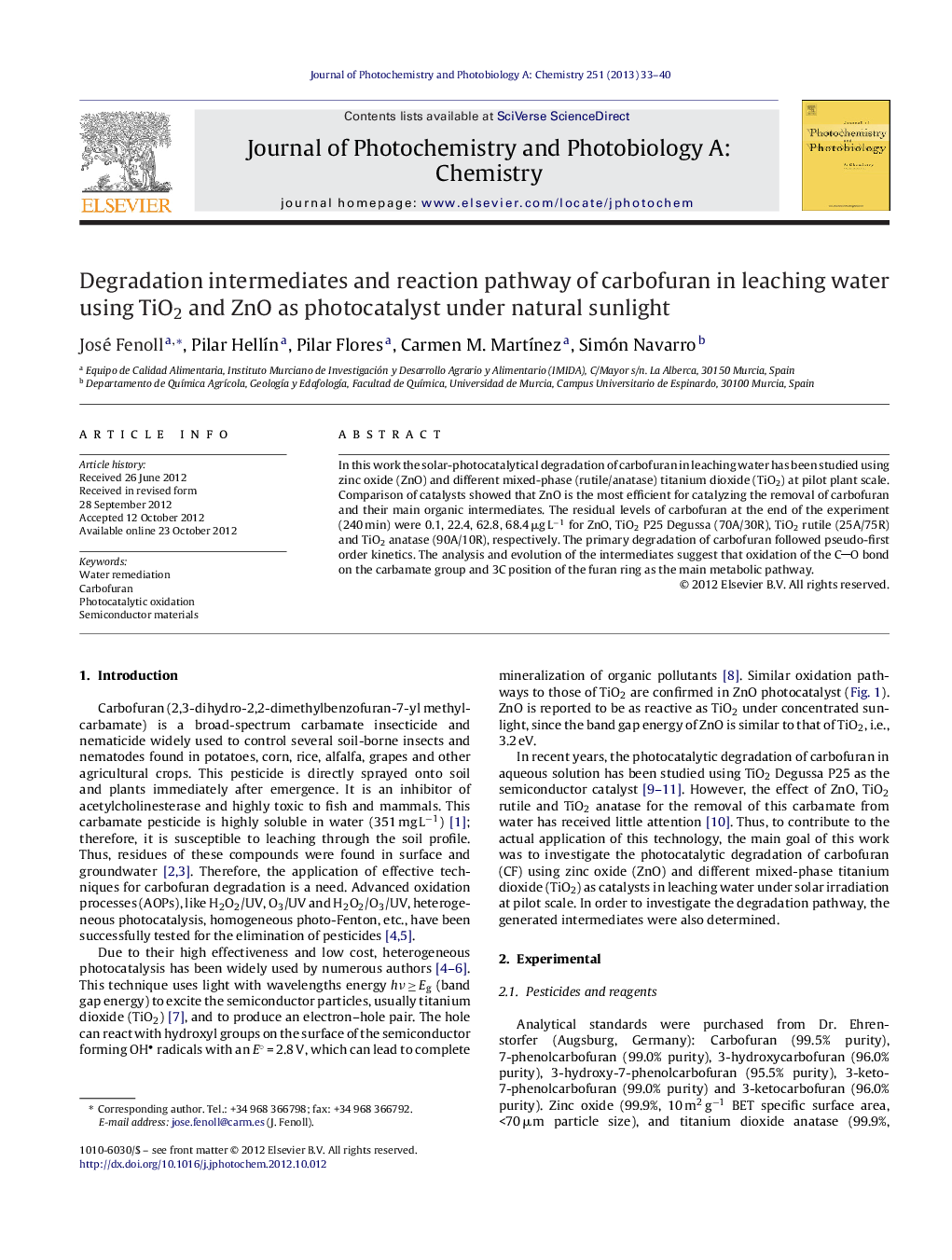| Article ID | Journal | Published Year | Pages | File Type |
|---|---|---|---|---|
| 26152 | Journal of Photochemistry and Photobiology A: Chemistry | 2013 | 8 Pages |
In this work the solar-photocatalytical degradation of carbofuran in leaching water has been studied using zinc oxide (ZnO) and different mixed-phase (rutile/anatase) titanium dioxide (TiO2) at pilot plant scale. Comparison of catalysts showed that ZnO is the most efficient for catalyzing the removal of carbofuran and their main organic intermediates. The residual levels of carbofuran at the end of the experiment (240 min) were 0.1, 22.4, 62.8, 68.4 μg L−1 for ZnO, TiO2 P25 Degussa (70A/30R), TiO2 rutile (25A/75R) and TiO2 anatase (90A/10R), respectively. The primary degradation of carbofuran followed pseudo-first order kinetics. The analysis and evolution of the intermediates suggest that oxidation of the CO bond on the carbamate group and 3C position of the furan ring as the main metabolic pathway.
Graphical abstractPhotocatalytic degradation pathway of carbofuran.Figure optionsDownload full-size imageDownload as PowerPoint slideHighlights► Heterogeneous photocatalytic oxidation of carbofuran in water. ► ZnO strongly enhanced photodegradation in comparison with TiO2. ► Four intermediates were identified by HPLC/MS/MS. ► A mechanism of degradation has been tentatively proposed.
